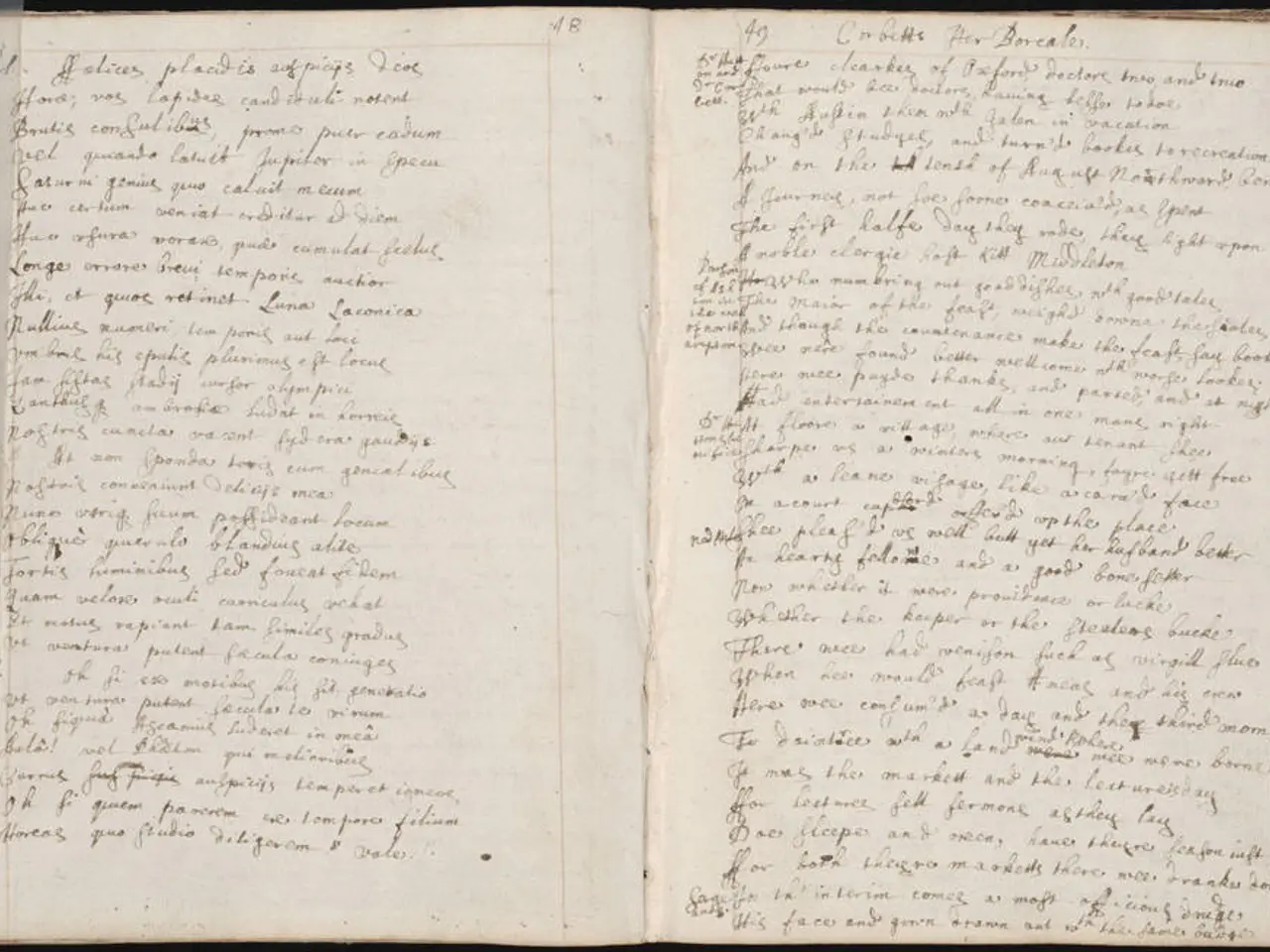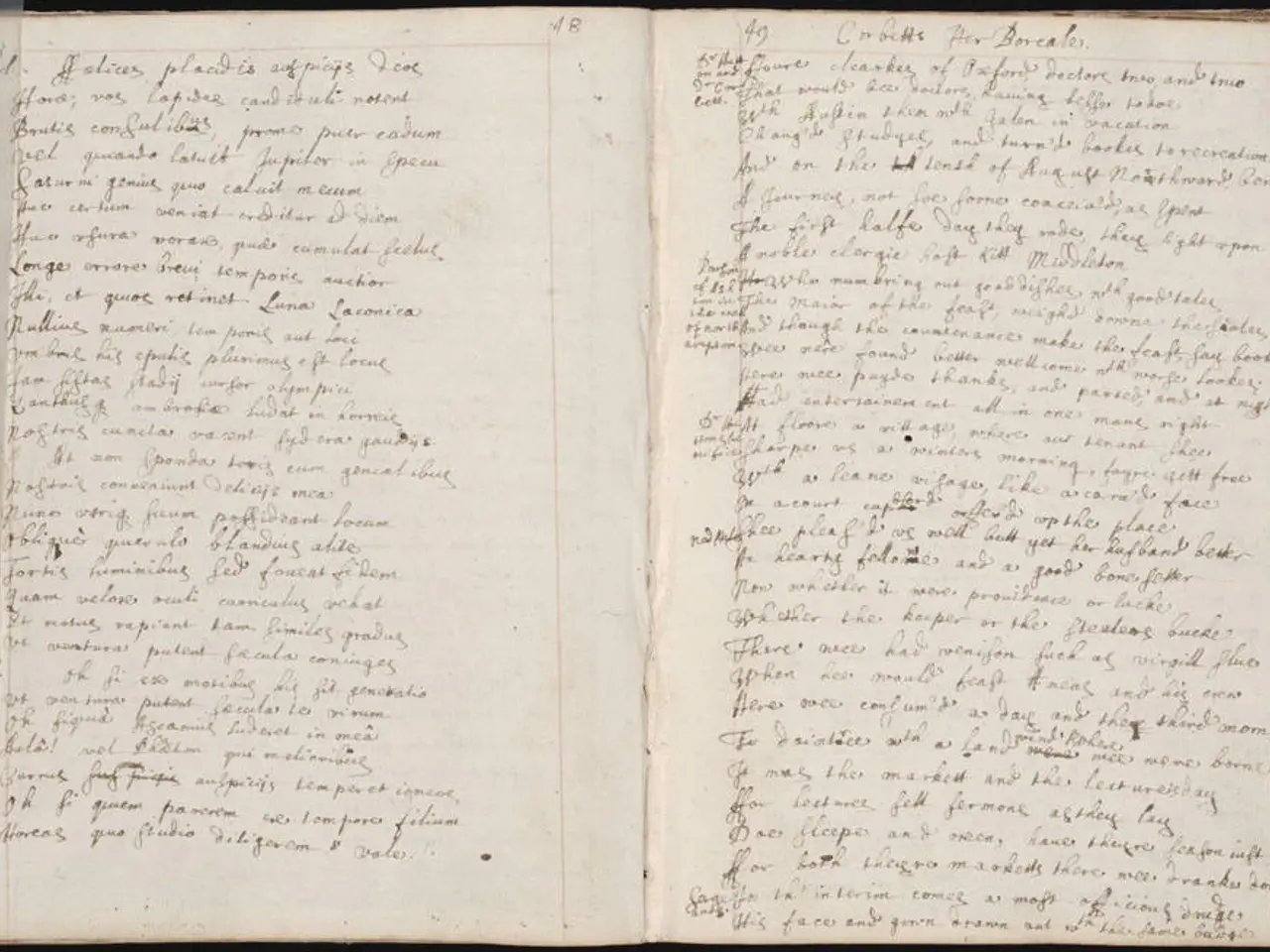The Function of Poetry Unraveled
In the realm of creative writing, poetry stands as a beacon of human expression, a medium that transcends borders and eras. This article delves into some of the most significant poetic traditions that have shaped literature throughout history.
First, let's discuss the Sonnet Tradition, a fixed form of poetry originating in Italy. Sonnets consist of 14 lines with specific rhyme schemes, such as the French sonnet tradition that uses the alexandrine meter of twelve syllables per line with a caesura. Known for exploring themes of love and idealized beauty, sonnets have been popularized by poets like Pierre de Ronsard and Joachim du Bellay.
Moving on to Children's Poetry, one of the oldest poetic traditions, rooted in oral folklore and nursery rhymes. Historically, children's poetry served educational and moral purposes, teaching lessons or preserving cultural heritage. With the advent of the printing press, European children's poetry emerged as books teaching manners and Christian values, marking an evolution from oral to written tradition.
Next is Pastoral Poetry, which idealizes rural life and shepherds, contrasting simplicity and purity with the corrupt complexity of urban existence. Early pastoral poetry often depicted idyllic natural scenes, but later poets introduced realism and sometimes irony, reflecting changing attitudes toward nature and society.
Indian Poetic Composition, a tradition deeply rooted in the country's culture, emphasizes the craft of verse-making involving rhythm, structure, and embellishment. These traditions integrate spiritual and philosophical meanings, reflecting the interplay of poet’s imagination, historical context, and audience engagement.
These traditions, while distinct, all contribute to literature by expressing universal human emotions, cultural values, philosophical ideas, and social critiques through distinctive poetic forms and techniques. They shape literary history and continue to inspire new poetic works worldwide.
In the world of poetry, poets can employ a myriad of literary devices, such as metaphors and similes. A metaphor compares things by stating something is something else, without explicitly stating what it's comparing. For instance, Robert Frost's "The Road Not Taken" uses roads as symbols for different choices in life. A simile, on the other hand, compares two things using the words "like" or "as," such as describing a poem as "a beautiful painting."
It's essential to remember that metaphors can be interpreted in various ways, and sometimes people perceive metaphors in a poem when there isn't one. Similarly, symbols in poetry involve one thing representing another. Understanding these devices enhances our appreciation for the depth and richness of poetry.
One poet who mastered the use of literary devices was William Shakespeare. He often used iambic pentameter in important scenes and for important characters in his plays, adding a rhythmic and poetic quality to his works.
As we delve deeper into the world of poetry, we find that the sky's the limit on what can be used and explored. These poetic traditions continue to inspire new works, shaping literary history and offering endless possibilities for expression.
References: - Sonnet - Wikipedia (2025) - Children's poetry - Wikipedia (2025) - Pastoral literature - Britannica (2025) - Poetic composition: Significance and symbolism - Wisdom Library (2025)
- In the realm of lifestyle and self-development, understanding literary devices such as metaphors and similes can offer insightful perspectives, much like poetic traditions have done throughout history.
- Fashion-and-beauty enthusiasts might be interested in the elaborate use of rhetorical devices in literature from various cultures, as they mirror the intricate designs often found in the world of clothing and makeup.
- Food-and-drink connoisseurs could find connections between the diverse flavors in their meals and the different tastes that poetry provides, since both constantly evolve and expand with new influences.
- Lovers of books could trace the evolution of children's poetry from oral folklore to the invention of the printing press, shedding light on the history of educational resources and how they influenced our society.
- Entertainment seekers can immerse themselves in the vibrant traditions of pastoral poetry, allowing them to escape to the simplicity of rural life and appreciate the beauty in nature's offerings.




